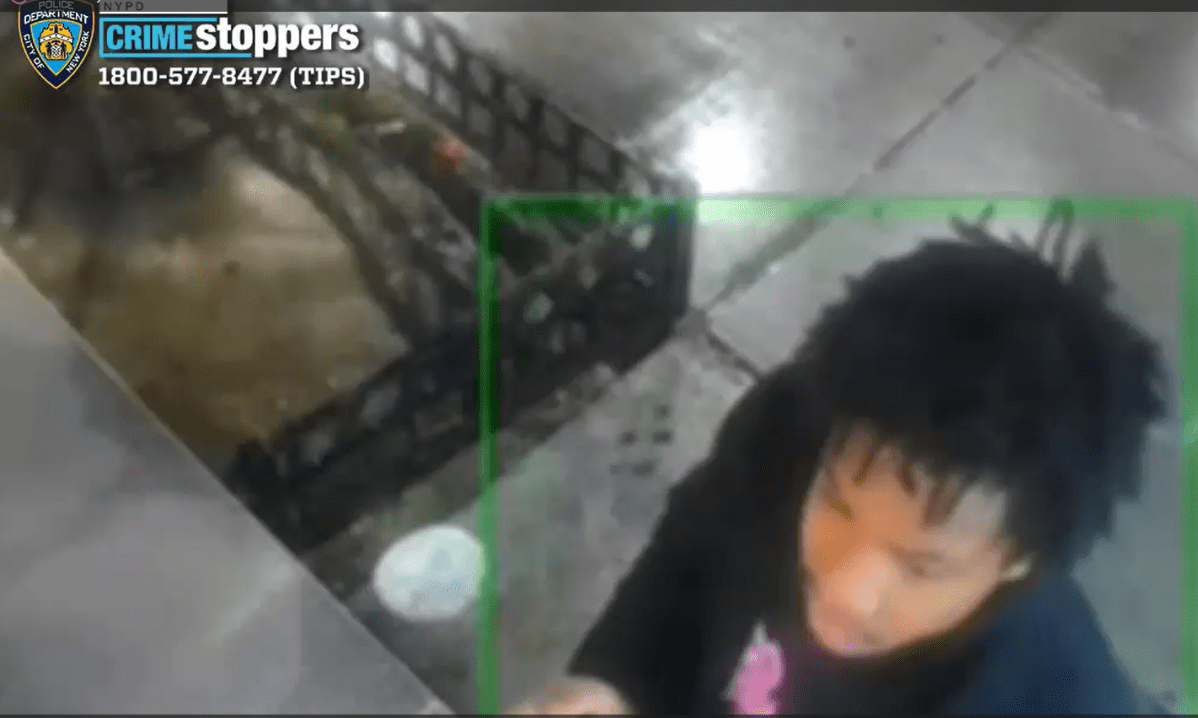
With the waterfront at his back, state Senator Daniel Squadron, with community leaders and collaborators, announced the interim opening of Pier 42 for public use on Saturday.
BY SAM SPOKONY | Damaris Reyes, executive director of Good Old Lower East Side, was the final person to speak before the interim opening of Pier 42 last Saturday, but she told a beginning of its history. And with her organization, which works to support neighborhood and preservation, entering its 35th year — just after recovering from the impact of Hurricane Sandy — Reyes seemed to be marking a moment of singular importance as she told that brief story.
“When we learned several years ago that the city was looking into redeveloping the waterfront, I’m not going to lie, we were afraid,” Reyes said. “And we were afraid because of all the development that we knew was coming. And we thought, ‘If they rebuild the waterfront, it’s just going to mean more displacement. It’s just going to mean more luxury development.’ ”
But as everyone present could see on that long-awaited, sunny spring day, those fears had never been realized. This wasn’t a groundbreaking for the construction of a luxury high-rise. It was a celebration on the path to a new city park — one soon to be designed by a renowned architect who worked on Hudson River Park, and which is expected to be on par with any major green space in the city.
To Lower East Side community leaders, it had been a long time coming. And to local politicians, it was a step forward in bringing a little more breathing room to their densely populated and park-hungry community.
“We’re building a harbor park — a Central Park in the center of the city — and it’s full of world-class open space,” said state Senator Daniel Squadron, who, along with U.S. Senator Chuck Schumer, secured $16 million in funding for the pier’s redevelopment in November 2011.
Construction on the 8-acre waterfront space next to South St., between Montgomery and Jackson Sts., isn’t set to start for at at least a year, as a master plan is now being finalized by Lower Manhattan-based firm Mathews Nielsen Landscape Architects, in collaboration with the city Parks Department, Community Board 3, local advocacy groups and area residents. But the pier’s northernmost section is now open to interim public use, for picnicking, ball playing or quiet relaxation, from dawn to dusk.
It was fitting that Squadron led the pier’s interim opening just two days after Assemblymember Brian Kavanagh, who also attended the pier’s opening, teamed with Borough President Scott Stringer to introduce the updated East River Blueway plan. The Blueway is an innovative scheme to reinvigorate the waterfront — and also protect it from storm surges — from the Brooklyn Bridge to E. 38th St. The success of Pier 42’s redevelopment would help support the Blueway plan, which does not yet have a budget or a timeline.

Saturday’s other highlight was a public preface to the Paths to Pier 42 series, which will feature art, educational and design installations on the pier’s northern portion during this summer and fall. The program was conceived by the Lower East Side Waterfront Alliance — which includes GOLES, Hester St. Collaborative, L.E.S. Ecology Center, Two Bridges Neighborhood Council and the Committee Against Anti-Asian Violence (CAAAV) — and aided by the Lower Manhattan Cultural Council.
Starting July 20, five jury-selected artists and designers will display their installations at the pier, using a mix of historical and cultural visual elements to enliven the previously empty space.
Jennifer Wen Ma, one of the five selected artists, a Lower East resident for more than a decade, said she’s tossing around ideas about creating a community garden, or developing a mentoring program for local children in association with other video artists.
“I actually take walks around the waterfront quite a lot, and I’ve always noticed that this portion was like no-man’s land,” Ma said Saturday. “So when I found out about [Paths to Pier 42], I thought it would be great to finally work in my community, for my community.”
Signe Nielsen, principal of Mathews Nielsen Landscape Architects, will present two master plan options to Community Board 3 on Thurs., May 9, and hopes to return with a final plan in July.
“This is a rare opportunity to actually open a park before it’s capitally improved,” Nielsen said. “It’s also hugely informative for us, because it allows us to see where people are choosing to sit down, which way they’re facing and what they’re looking to do here. How many people are bringing kids? How many are bringing bikes? Looked at over the course of the summer, these are valuable things that can help influence the our design and the park’s future.”
When asked about her perceptions of the concepts being put forth by the Paths to Pier 42 artists, Nielsen said she believes they all have “really good ideas,” and even hopes to make them a permanent part of the park once it is developed.


































